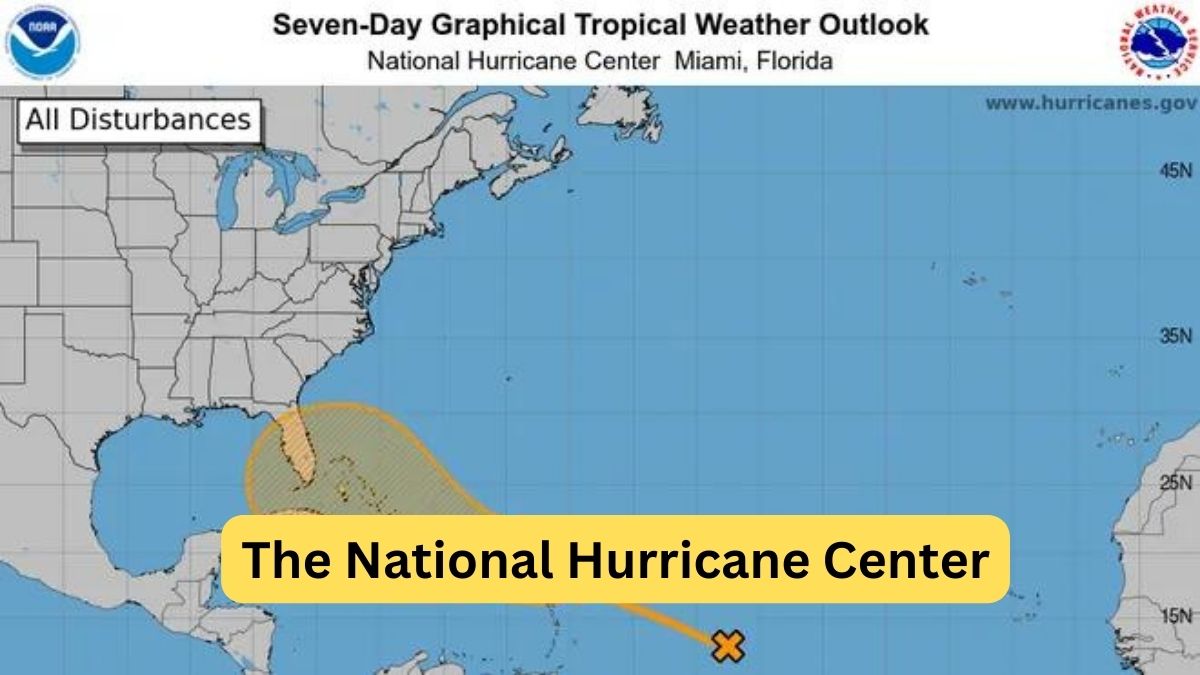The National Hurricane Center (NHC) plays a critical role in monitoring and forecasting hurricanes and tropical storms in the Atlantic and Eastern Pacific. Located in Miami, Florida, the NHC is an integral part of the National Oceanic and Atmospheric Administration (NOAA). Its primary mission is to provide accurate and timely information to protect lives, property, and economic assets from the impacts of severe tropical weather.
History and Purpose
Founded in 1958, the NHC was established to improve the prediction and tracking of hurricanes. Its creation marked a significant advancement in meteorological science, aiming to provide better forecasts and warnings for these potentially devastating storms. The center operates with the goal of minimizing the impact of hurricanes by offering reliable forecasts and coordinating with emergency management officials and the public.
Structure and Operations
The National Hurricane Center is comprised of several key components:
- Forecasting Division: This division is responsible for producing and updating forecasts on hurricanes and tropical storms. It utilizes a range of tools, including satellite data, weather models, and aircraft reconnaissance. The forecasts provided by the NHC include information on the storm’s track, intensity, and potential impact on land.
- Tropical Analysis and Forecast Branch: This branch focuses on the analysis of tropical cyclones and the development of forecast products. It monitors and interprets data from various sources to predict storm behavior accurately.
- Public Advisory Team: This team is responsible for issuing public advisories, which include warnings, watches, and updates on tropical systems. These advisories are crucial for keeping the public informed and ensuring that they take appropriate action to protect themselves and their property.
- Hurricane Specialist Unit: This unit includes a team of meteorologists who specialize in hurricanes and tropical storms. They use advanced forecasting techniques and models to analyze and predict storm activity.
- Marine Program: This program focuses on the impact of hurricanes and tropical storms on marine environments and shipping. It provides forecasts and warnings relevant to maritime activities.
Key Functions and Products
The National Hurricane Center produces several important products to aid in hurricane preparedness and response:
- Tropical Cyclone Forecasts: These forecasts provide detailed information about the expected path and intensity of hurricanes and tropical storms. They include the forecast track, which shows the predicted path of the storm, and the cone of uncertainty, which indicates the possible range of the storm’s path.
- Tropical Storm Warnings and Watches: The NHC issues warnings and watches to alert the public and authorities about the potential impacts of a tropical cyclone. A warning indicates that a tropical storm or hurricane is expected to affect the area within 36 hours, while a watch signifies that conditions may develop within 48 hours.
- Hurricane Advisories: These advisories provide updated information on the storm’s status, including its location, intensity, and potential impacts. They are essential for emergency planning and decision-making.
- Hurricane Outlooks: These outlooks offer long-range forecasts and predictions about the likelihood of tropical cyclones forming in specific regions. They help in early preparedness efforts and planning.
- Storm Surge Products: The NHC provides information on storm surge, which is the abnormal rise in sea level caused by a hurricane’s winds. This data helps in assessing potential flooding and its impact on coastal areas.
Technology and Data Sources
To fulfill its mission, the National Hurricane Center relies on a range of technological tools and data sources:
- Satellites: Satellite imagery is crucial for monitoring hurricanes and tropical storms. Satellites provide real-time data on storm development, movement, and intensity. They help in tracking storm systems from their formation to landfall.
- Weather Models: The NHC uses sophisticated computer models to simulate and predict storm behavior. These models take into account various atmospheric and oceanic conditions to generate forecasts.
- Reconnaissance Aircraft: The NHC utilizes aircraft, known as “Hurricane Hunters,” to fly into storms and collect data on their structure and intensity. This information is vital for improving forecast accuracy.
- Buoys and Sensors: Ocean buoys and sensors provide real-time data on sea surface temperatures, wave heights, and other conditions. This information helps in assessing the potential strength and impact of storms.
Collaboration and Communication
The National Hurricane Center collaborates with various organizations and agencies to enhance its forecasting capabilities and public outreach:
- NOAA: As part of NOAA, the NHC benefits from the resources and expertise of the larger organization. NOAA’s broader mission includes weather prediction, climate monitoring, and environmental protection.
- National Weather Service: The NHC works closely with the National Weather Service (NWS) to coordinate forecasts and warnings. Local NWS offices disseminate information and provide localized support during hurricanes.
- Emergency Management Agencies: The NHC partners with emergency management agencies at the local, state, and federal levels to ensure effective communication and coordination during storm events.
- International Organizations: The NHC collaborates with international meteorological organizations to share data and improve forecasting capabilities globally. This collaboration is essential for tracking storms that may affect multiple countries.
Challenges and Future Directions
Despite its advancements, the National Hurricane Center faces several challenges:
- Predictive Accuracy: Improving the accuracy of forecasts and reducing the uncertainty of storm tracks remain ongoing goals. Advances in technology and data analysis are essential for enhancing predictive capabilities.
- Communication: Effectively communicating complex meteorological information to the public is crucial. The NHC continually works on improving the clarity and accessibility of its products.
- Climate Change: The increasing impact of climate change on hurricane behavior poses a challenge for forecasting and preparedness. The NHC is actively researching and adapting to these changes.
Conclusion
The National Hurricane Center plays a vital role in safeguarding lives and property from the threats posed by hurricanes and tropical storms. Through its comprehensive forecasting, advanced technology, and collaborative efforts, the NHC provides essential information that helps communities prepare for and respond to severe weather events. As the climate continues to evolve, the NHC’s commitment to improving its capabilities and communication remains crucial for managing the risks associated with tropical cyclones.
